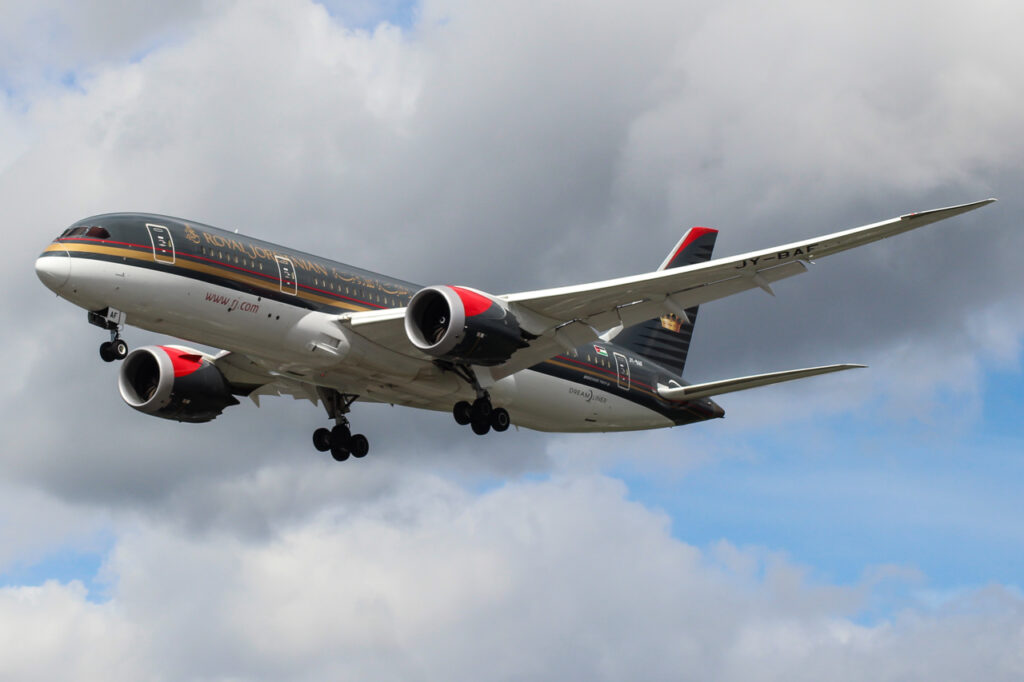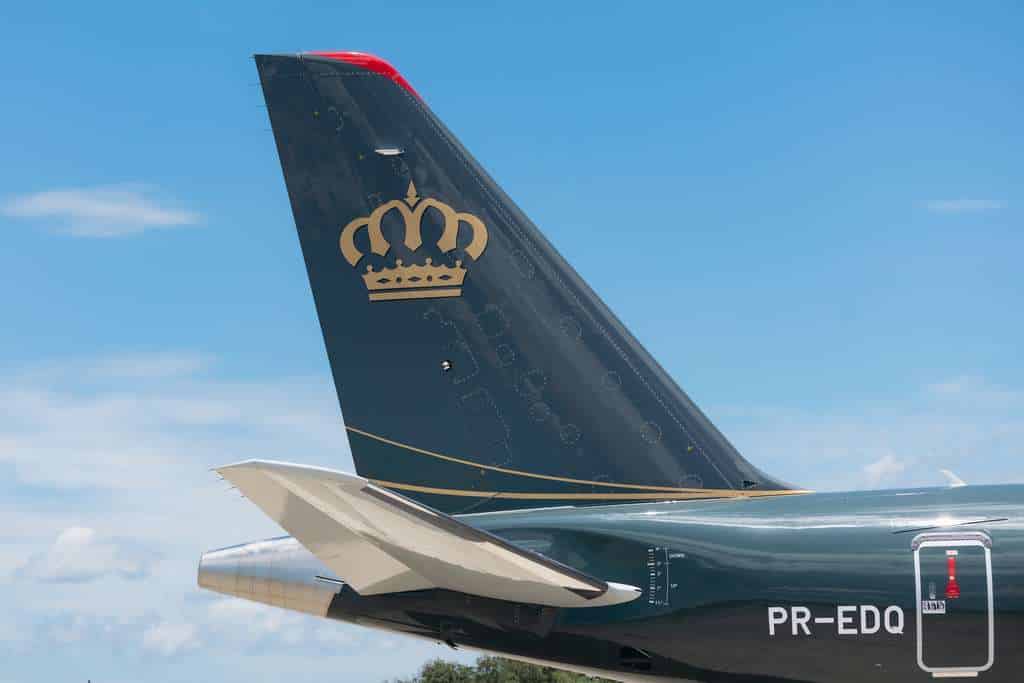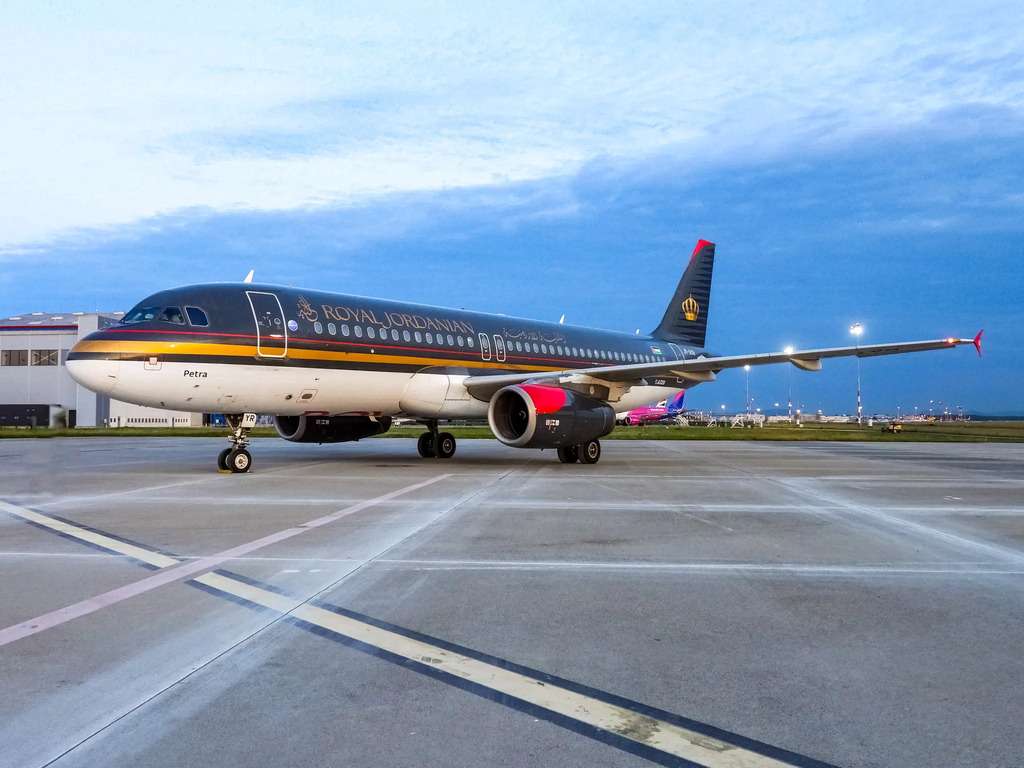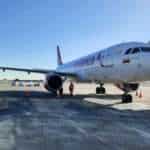Royal Jordanian Airlines (RJ) has partnered with Viasat Inc. (NASDAQ: VSAT), a leader in satellite communications, to bring high-speed Wi-Fi to its entire fleet.
This upgrade forms part of RJ’s fleet modernization, with over 40 aircraft receiving Viasat’s in-flight connectivity (IFC) systems.
Fleet Upgrade Details
The new Wi-Fi will be available on various routes across the Middle East, Europe, and North Africa. Passengers on short-haul flights will enjoy connectivity on the Embraer E2 fleet, while medium-haul routes will be served by the Airbus A320 family aircraft.
Long-haul flyers can expect seamless Wi-Fi access on the Boeing 787s. Notably, RJ plans to factory-install the system on its new Embraer E2, Airbus A320/321, and Boeing 787-9 models.
Existing Boeing 787-8 widebody aircraft will also be retrofitted with the advanced Wi-Fi solution. This enhanced connectivity promises a superior in-flight experience for passengers and crew.
Travellers can expect fast internet speeds, ideal for streaming entertainment, real-time communication, and staying productive throughout the flight.

Stakeholder Comments
“We are committed to providing our passengers with a superior in-flight experience,” said Samer Majali, Vice Chairman and Board Designee CEO of Royal Jordanian Airlines.
“By introducing high-speed streaming Wi-Fi, we are enabling state-of-the-art connectivity and an enhanced entertainment experience.”
“We’re excited to debut Wi-Fi on our new E2 Embraer Jets arriving later this month,” he said.

Don Buchman, VP and GM of Commercial Aviation at Viasat, echoed the sentiment. “We are proud to partner with Royal Jordanian Airlines to elevate their passenger experience with fast and reliable connectivity across their entire network,” he said.
“This collaboration ensures a consistently high-quality Wi-Fi experience, even during peak demand.”
Viasat’s proven track record in the aviation market plays a key role in this partnership. Their focus on combining high throughput capacity with flexible allocation ensures consistent performance for Royal Jordanian passengers.
Royal Jordanian Airlines will utilize Viasat’s high-speed Ka-band satellite network, including the upcoming ViaSat-3 constellation, to deliver seamless connectivity across its varied flight paths.

About Royal Jordanian Airlines
As the Levant region’s leading carrier, Royal Jordanian Airlines aspires to be the airline of choice for connecting Jordan and the Levant with the world.
RJ was established in 1963 as the official national airline carrier of the Hashemite Kingdom of Jordan, and for the last 60 years, has been an ambassador of goodwill for the Kingdom.
The carrier has facilitated tourism and trade, and providing people with an introduction to Jordan’s renowned hospitality and warmth.
From its hub at Queen Alia International Airport, RJ operates a modern fleet of aircraft that flies to destinations worldwide.
Its route network now connects Amman to Europe, the Middle East, North America, and Asia. As a member of the oneworld alliance, RJ and its 13 international airline partners provide a combined travel network that reaches more than 1,000 airports in 170 countries.

Click the banner to subscribe to our weekly newsleter.

Click the photo to join our WhatsApp channel so then you can stay up to date with everything going on in the aviation industry!







